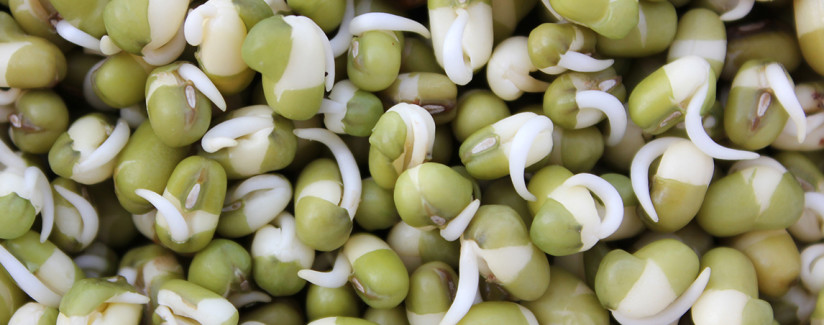
“Enhanced technology and innovation is necessary to feed the expanding global population.”
10/21/2013
Though agriculture has largely met world food demand in the past, there are about 800 million people who have remained food insecure in industrialized and emerging countries. Increasing food prices have led to economic difficulties in many countries, generating further food insecurity and political instabilities.
The Food and Agriculture Organization of the United Nations estimates population will grow at an average of 1.1 percent while food demand will grow at 2.2 percent annually. Global land use will increase by less than 1 percent, resulting in a 16 percent reduction in world agricultural GDP by 2020.
Investments in technology innovation will be the key to the future food supply. This includes the development and use of nutrients, pest control products, and farm equipment. It also includes the possibility of genetically enhanced crops to provide increased yields and more calories per yield. Future farmers will increasingly rely on their own energy production through biomass and wind farms in order to decrease dependence on fossil fuels. Much must also be done to reduce food waste.
We wanted to get an experts opinion on the topic so we reached out to Dave D. Weatherspoon, PhD, Professor of Agricultural, Food and Resource Economics at Michigan State University and asked him to evaluate the following statement:
True or not? “Enhanced technology and innovation is necessary to feed the expanding global population.”

Dave D. Weatherspoon, PhD says:
Investments in technology innovation will be the key to the future food supply. This includes the development and use of nutrients, pest control products and farm equipment. It also includes the possibility of genetically enhanced crops to provide increased yields and more calories per yield.
Current global food situation and drivers of food demand
Though agriculture has largely met the world’s effective demand for food in the past, there are about 800 million people who have remained food insecure in Industrialized and Emerging countries (World-Bank, 2008). Recent sharply increasing food prices have lead to economic difficulties in many countries among the poor generating further food insecurity and political instabilities (Braun and Torero, 2009). As of April, 2009 there were still 33 countries facing food crisis and in need of external support (FAO, 2009).
Cereals demand grew by 2-3 percent per year, due to rising incomes in China, India, Sub-Saharan Africa, and other Asian countries. Simultaneously yield growth in these cereals declined from 3 percent in the 1970s to 1-2 percent in the 1990s. The net result of yield decline and droughts has been a reduction of cereals reserves to less than 400 million tons in 2007 from 700 million tons in 2000 (Braun and Torero, 2009). High oil prices coupled with biofuel policies in the U.S. and E.U. has also increased the demand for cereals (Braun and Torero, 2009, Lipsky, 2008).
Drivers of low food supply (Low R&D investments in agriculture, Droughts/Climate change)
The lack of emphasis of public investment in agricultural research and outreach over the past decade resulted in low agricultural productivity growth. The additional effects of droughts in large grain producing nations led to low worldwide production resulting in high food prices (Braun and Torero, 2009). Meanwhile, world population is currently at 6.5 billion people and is expected to grow to 8.3 billion by 2030. It is estimated that population will grow at an average of 1.1 percent while food demand will grow at 2.2 percent per annum (FAO, 2002). At the same time, the current growth in utilization of agricultural products for industrial purposes will accelerate. Hence, technological advancements, shift in consumer consumption pattern, changes in food production and supply systems will play a vital role in meeting this need. However, global land use will increase minimally by less than 1 percent (Braun, 2007) due to climate change and that will reduce world agricultural GDP by 16 percent by 2020 (Cline, 2007). Newly cultivated land does not appear to be the answer given that they are expected to contribute only one-fifth of the global cereal production needed to meet demand by 2020 (Pinstrup-Andersen, et al., 1999).
Role for research and innovative technology in food production and sustainability
Public and private investments in technology innovation in agricultural productivity and long-term sustainable production systems will be the key to the future food supply. This includes the development and use of nutrients, pest control products, crop cultivars, and farm equipment. It also includes possibility of genetically enhanced crops providing greater nutritional efficiency (more calories per yield, or more yield), manipulation of natural pest control agents, and use of farm management techniques that focus on whole-farm productivity over time (Hutchins and Gehring, 1993). In addition, the future will also rely on increased use of precision agriculture that uses computational technology, combined with geographical location devices and remote sensing advancements that will radically change the way all crops will be managed (Hutchins, 2000). Innovation in access to information through modern ICT tools (like cell phones), will improve market efficiency for emerging markets small-scale farmers’ access to services, and farm produce markets.
However, technology advancement alone without reorganization of the current agricultural production and supply chain system will not be enough to guarantee future food needs. Industrialization of agricultural production and the supply chain system require high consumption of fossil fuel. This is vulnerable to fossil fuel depletion in the long run or supply disruption over the short term. Future farmers will increasingly rely on their own energy production through biomass and wind farms. Food supply chain will also rely more on bulk transportation, local food production and consumption as consumers’ demand food in season with less processing and carbon footprint (Heinberg and Bomford, 2009). At the same time food-store location will be used to solve the persistent “food deserts” often seen in many U.S. metropolitan cities.
Apart from technology advancement on the production side, other areas will also have to improve like waste reduction. Food is lost after harvest to processing, spoilage, insects, and rodents in many emerging nations. Reducing these postharvest losses could add a sizable quantity to the global food supply. This will reduce the need for greater intensification for production in the future. Estimates of total postharvest food loss range from 10 to 40 percent (FAO, 2008, FAO, 1997, World-Resources, 1998). Improved storage including cold storage, and improved logistics and transportation could drastically reduce waste in emerging nations.
In many industrialized countries consumers’ demand for cosmetically perfect produce often means that a percentage of the food successfully harvested is wasted. Foods that might have been acceptable before may become “lost” because its physical attributes fall short of fickle market’s moving standard. Consumers and retailers in America throw away approximately 40-50 percent of all the food sold. Within that figure, retailers and restaurants throw away 35 million tons a year, valued at $30 billion. Households are responsible for throwing away approximately $43 billion worth of food. That is about 14 percent of what they buy, or 1.28 pounds of food per household per day. Vegetables are 27 percent of food trash, while packaged unexpired foods in their original containers are 14 percent (Jones, et al., 2003). On average, a family of four currently tosses out $590 annually in meat, fruits, vegetables, and grain products (Jones, 2004). These figures indicate that consumer and communities can contribute to meeting global future food needs by reducing practices of food consumption that result in waste.
Conclusion
We see a future of food production that will increasingly rely on the use of sustainable innovative technology to solve our future food need. However, a prudent future-food production system must be comprehensive and coordinate agricultural policy with population, consumer education, economic, supply chain, and energy policies.
References
Braun, J. v. “The World Food Situation: New Driving Forces and Required Actions.” International Food Policy Research Institute (2007).
Braun, J. v., and M. Torero. “Exploring the Price Spike.” Choices 24, no. 1(2009): 16-21.
Cline, W. R. “Global warming and agriculture: Impact estimates by country.” Center for Global Development and Peterson Institute for International Economics, (2007).
FAO. “Aiming to reduce food insecurity caused by soaring food prices.” Food and Agricultural Organization (2008).
FAO (2009) Crop Prospects and Food Situation, FAO Economic and Social Development Department. http://www.fao.org/docrep/011/ai481e/ai481e02.htm.
FAO. “Estimated Post-Harvest Losses of Rice in Southeast Asia.” Food and Agriculture Organization of the United Nations (1997).
FAO (2002) World Agriculture 2030: Main Findings.
Fischer, G., M., F. T. Shah, and H. v. Velhuizen. “Socio-economic and climate change impacts on agriculture: An integrated assessment, 1990-2080.” Philosophical Transactions of Royal Society no. B 360(2005): 2067-83.
Heinberg, R., and M. Bomford. The Food and Farming Transition: Toward a Post-Carbon Food System Edited by A. Miller, and D. Lerch. Sebastopol, CA: Post Carbon Institute, 2009.
Hutchins, S. H. (2000) The Role of Technology in Sustainable Agriculture.http://ipmworld.umn.edu/chapters/hutchins3.htm.
Hutchins, S. H., and P. J. Gehring. “Perspective on the Value, Regulation, and Objective Utilization of Pest Control Technology.” American Entomology 39(1993): 12-15.
IFIC-Foundation (2009) Food Biotechnology, vol.http://ific.org/food/biotechnology/upload/foodbiotechnologybackgrounder.pdf, pp. 1-4.
Jones, T. “The Value of Food Loss in the American Household.” Bureau of Applied Research in Anthropology, University of Arizona (2004).
Jones, T., A. Bockhorst, B. McKee, and A. Ndiaye. “Percentage of Food Loss in the Household.” Bureau of Applied Research in Anthropology, University of Arizona (2003).
Lipsky, J. (2008) Commodity Prices, and Global Inflation. Remarks at the Council on Foreign Relations, New York City.
Pinstrup-Andersen, P., R. Pandya-Lorch, and M. W. Rosegrant. “World Food Prospects :Critical Issues For The Early Twenty -First Century.” International Food Policy Research Institute, (1999).
World-Bank. “World Development Report 2008.” The World Bank (2008).
World-Resources. “Disappearing Food: How Big are Postharvest Losses?” World Resources 1998-99 (1998).
“Seeds” by U.S. Department of Agriculture is licensed under CC BY 2.0.


























